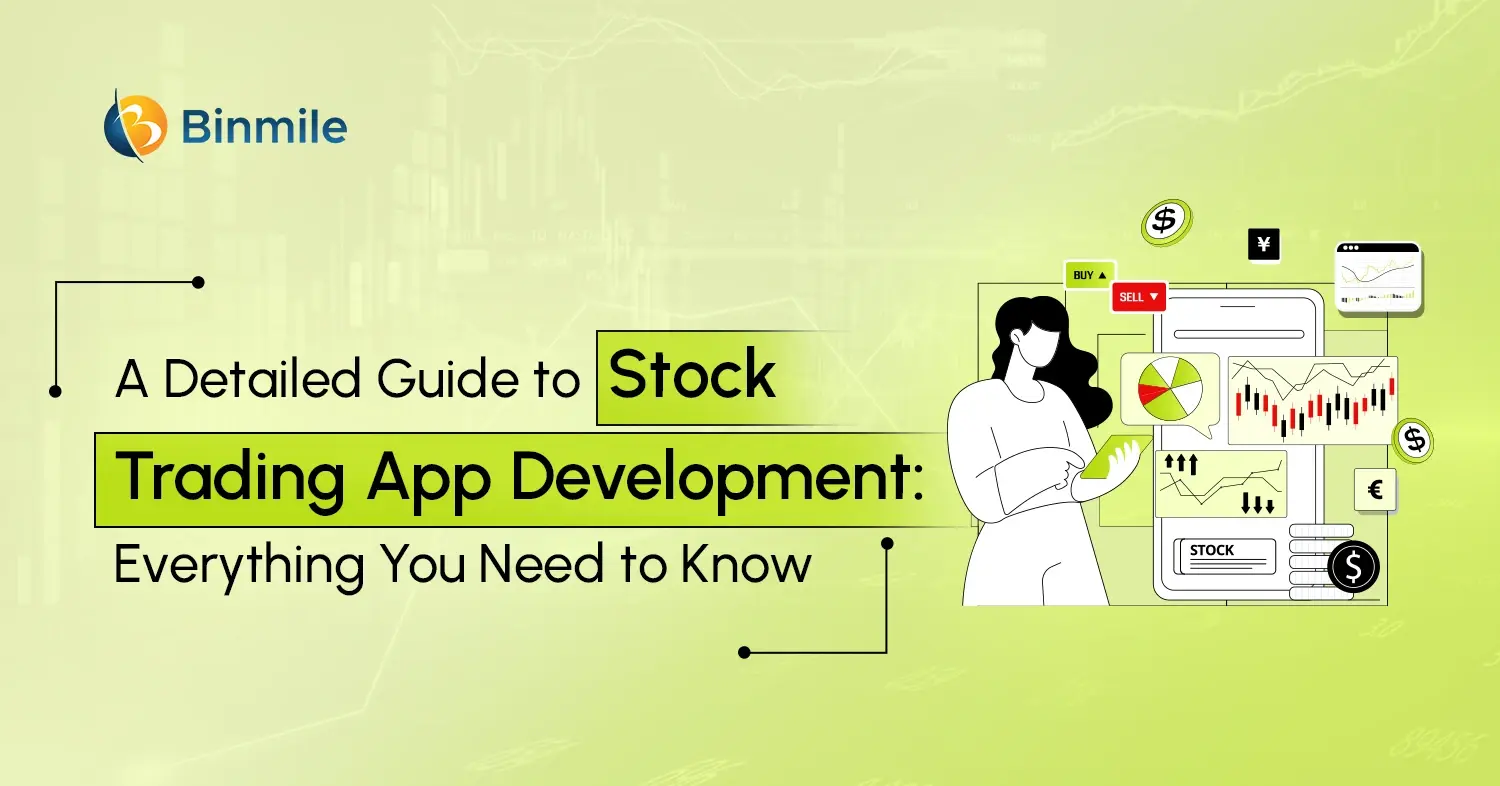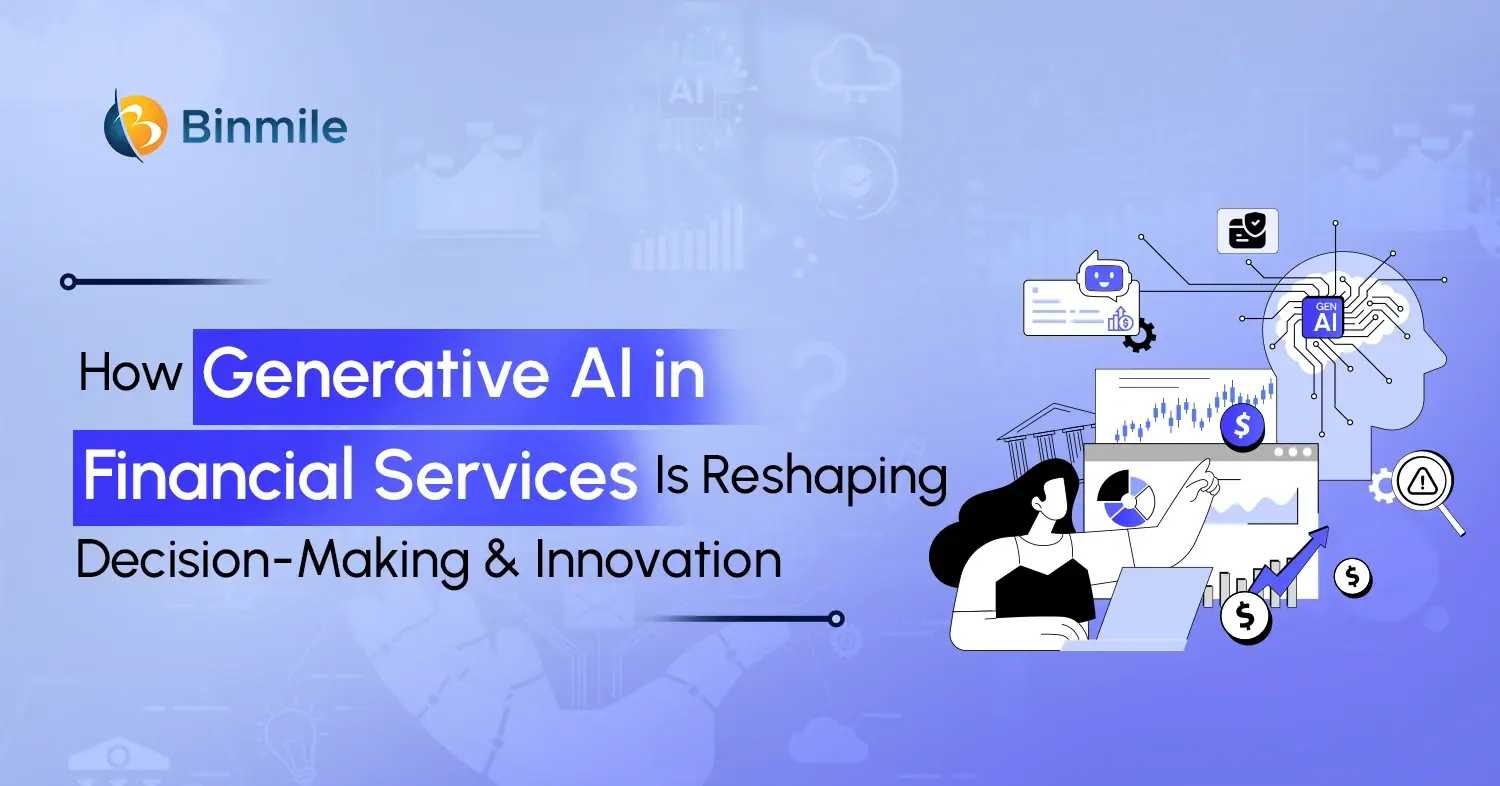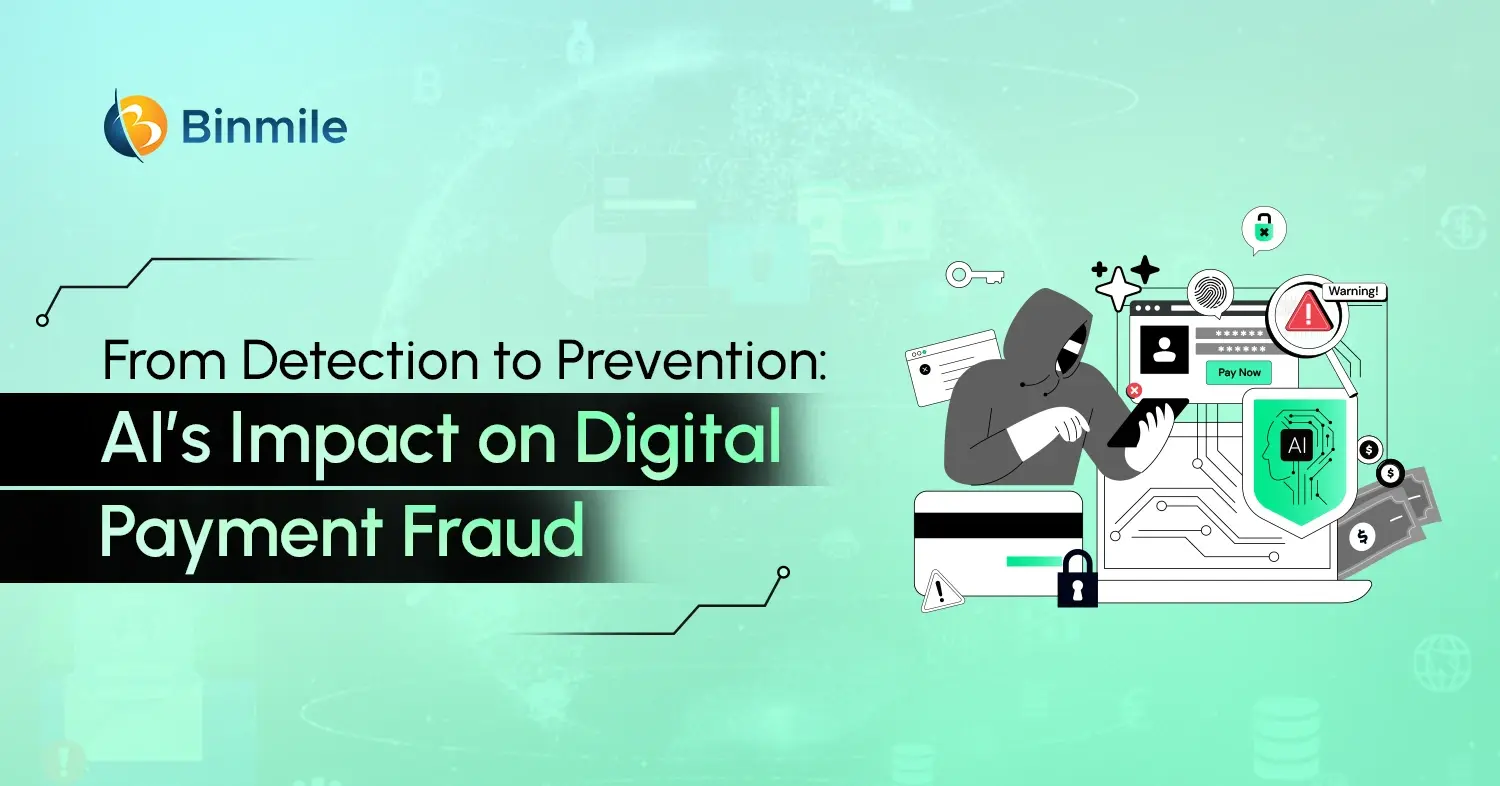Gone are the days when people used to fear trying new things. These days, they get more excited than scared when trying new things. Take, for instance, stock trading. From college students to professionals, most of them are pursuing their interests, leading to a sharp rise in the investment culture across the globe. The interest in investing in the stock market gave a boost to stock trading app development, which is influencing the entire fintech sector. And all of this has become a lot easier by making it feasible to buy, sell, and manage stocks with a few clicks on a dedicated application.
So, if you are someone who is deeply interested in stock market apps development and wants to learn the process, cost, features, examples, and tech stack for such an app creation, then you are at the right place. This content piece will act as a comprehensive guide for stock trading applications and help you acquire the desired knowledge effectively. Let’s dive into:
Stock Trading App: Market Overview
A stock trading app is a cloud-based platform widely used to buy, sell, and manage stocks. All you need to perform these tasks is a smartphone and high-speed internet connectivity, and you are ready to begin your trading journey with the push of a few buttons.
A global data and business intelligence platform recently researched and predicted that the online trading market globally is going to grow at a CAGR of 6.4%, touching an estimated mark of $13.3 billion by 2026. These numbers clearly indicate why it is necessary for entrepreneurs to think of investing in stock trading app development.
How Does a Stock Trading Platform Work?
Stock market apps are all about managing customers’ money in the best possible way, including:
- Investing
- Spending
- Lending
- Borrowing
- Storing
- Protecting
These apps make the most of technology with a strategic approach and handle the financial activities of their customers in a systematic manner. Once installed, such apps don’t just enable consumers to buy and sell stocks but also keep track of the market in real-time using their mobile phones. However, you must be informed that all these transactions come with several security concerns that users must consider to ensure a safe and secure trading experience.
One thing you must note is that users need to pay brokerage fees depending on the policy of the application they are using. But if you are planning to work on a new trading app development, you have the freedom to eliminate costs for your potential customers by relieving them from brokerage charges. And that’s one of the solid methods to market your newly built application for stock trading.
Why You Must Invest in Stock Trading App Development?
There is no denying the fact that there is a considerable user base for this app category across different age groups, showing the pressing need to put your money on stock trading app development. Apart from that, the ease of transaction offered by such apps is a feather in their cap.
The best part of these apps is that they make it feasible for busy investors to be informed about how their portfolios are operating. This compels a considerable number of users to become paid members of the app. All in all, the scope to gain a huge amount of money and fame is high when you decide to build a stock market app.
Process to Develop Stock Trading App: Step-by-Step Guide
Building a stock trading app involves a series of methodical steps to ensure functionality, security, and user satisfaction. This process varies from company to company, but if you are willing to work with Binmile, the steps we adopt are outlined below:

1: Initiate Market Research
Before development begins, analyze the market to understand what stock trading app for beginners and seasoned investors need. Study trading behavior, preferred features, and user complaints from top stock trading app reviews. Assess competitor offerings and define a niche your app can fill. Analyzing user preferences and competitor offerings is crucial to creating a differentiated product. Consider user reviews of existing stock trading applications to identify gaps and areas for improvement, allowing you to offer innovative solutions.
2: Legal & Regulatory Requirements
Stock trading apps handle sensitive financial data and must comply with regional and global financial laws. Whether you’re launching in India or overseas, regulations like SEBI, FINRA, GDPR, and KYC/AML guidelines are non-negotiable. Ensuring compliance from the start will avoid costly reworks later. Partner with legal advisors to align the app architecture with necessary licensing and financial protocols. Security-first development is not optional—it’s foundational.
3: Feature Set Planning
List the features your stock trading app must offer, focusing on both essential and value-added tools. Must-have features include user onboarding, secure authentication, real-time stock quotes, trading execution, and portfolio tracking. Nice-to-have additions like stock screeners, watchlists, financial news, and AI-powered insights can provide a superior edge, especially for stock trading app development solutions targeting new investors.
4: Choose the Right Tech Stack
Choosing the right technology ensures app scalability, performance, and cross-device compatibility. React Native or Flutter are ideal for building stock trading applications across platforms. On the backend, go for robust and secure options like Node.js or Django. Ensure seamless API integration for real-time market data, payment gateways, and secure data encryption. Prioritize tech that balances speed and security.
5: Design Seamless User Experience
User experience can make or break a trading app. The interface should be intuitive for beginners yet powerful for experienced users. Collaborate with UI/UX designers to create wireframes that reflect real-time trading journeys. Ensure that the dashboard, charts, and account navigation are visually clean and functionally fluid. Mobile-first responsiveness, accessibility standards, and dark/light modes should be part of the design strategy.
6: Develop & Integrate the MVP
With your features mapped and design approved, start coding the Minimum Viable Product (MVP). Build essential modules first, then integrate additional functionalities. Follow agile development to test iteratively and reduce bugs. This stage lays the foundation for your app’s long-term performance and should be handled by a reliable stock trading app development company experienced in fintech solutions.
7: QA & Security Testing
Security is paramount in stock trading apps due to the sensitive nature of financial transactions. Comprehensive testing should include both functional and security aspects. Conduct performance testing under high load to ensure that the app handles traffic spikes effectively. Ensure encryption protocols (SSL, AES) are fully implemented. Additionally, penetration testing and vulnerability assessments are crucial to protecting user data and financial information.
8: Deployment & Launch
Once the MVP passes all tests, optimize it for launch. Use compelling app store descriptions and visuals to appeal to your target audience. Incorporate keywords strategically for ASO, and collect feedback via closed beta testing. Promote your app through relevant channels, especially where stock trading app reviews influence decisions—like fintech forums and investor communities.
9: Post-Launch Support & Updates
Once launched, continuous monitoring is essential to ensure smooth operation. Analyze user feedback, fix bugs, and update the app regularly to add new features or refine existing ones. Engaging with users through updates and bug fixes will help retain users and improve the app’s reputation in the market.
10: Scalability & Long-Term Maintenance
As user demand grows, ensure your infrastructure can scale without compromising performance. Regularly update the app’s technology stack, security measures, and compliance standards. Ongoing support is critical for maintaining app performance and meeting evolving regulatory requirements.
Let your users leverage real-time and seamless trading experience! Get expert Stock Trading App Development Services and bring your trading platform to life.

Top 9 Must-Have Features of a Successful Stock Trading App

1. Easy Login
Login is the first step of accessing an application, for which developers must implement the simplest possible approach. A great online trading app can have various login options, like PIN codes and biometrics, to make accessibility easier for users.
2. Push Notifications
Just like other applications, an application for stock trading must be equipped with a push notification feature so that users can get on-time updates about any price change, news update, and account activity. This enables them to make well-informed decisions immediately.
3. Real-Time Monitoring
Now, the most imperative and useful feature of stock trading app development is real-time monitoring. This monitoring process can be adopted for multiple use cases, such as:
- Price fluctuations
- Portfolios
- Trends
- The rest of the things
This way the users can stay up-to-date with the market scenario, helping them in making better decisions.
4. Cross-Platform Accessibility
A high-end stock trading platform must enable users to enter the app from several devices, like:
- Smartphones
- Laptops
- Computers
- Tablets
This ability of multi-platform accessibility offers a superb experience to users.
5. Multiple Payment Options
Having wads of payment options at users’ disposal has become essential with the rise in fintech applications. Users must have the freedom to use UPI, debit cards, and other desired payment options as per their convenience.
6. Transaction History
All the users like this feature because it allows them to watch their transaction history, including withdrawals and deposits done through the stock trading platform.
7. Market Trends & Analytics
By digging deeper into the latest market trends & analytics features of a trading application, users can become familiar with their trading environment.
8. Newsfeed
This is the least-used feature of trading app development, yet it is extremely useful for naive traders who just entered the stock market field. This section includes the latest happenings in the stock market, such as:
- Initial Public Offerings (IPOs)
- Best & worst performing stocks
- Other associated information
9. Third-party API Integration
Incorporating third-party APIs enables users to incorporate their accounts with other trading tools and applications, allowing them to analyze a wide variety of data.
Tool and Technologies Used to Develop Online Trading App: Complete Tech Stack
When you start working on a stock trading app development, picking the right tech stack is essential for ensuring security, scalability, and performance. While there are several viable solutions out there, here’s one decent tech stack to take into account:

Frontend
- Web: React.js or Vue.js for responsive interfaces
- Mobile: React Native or Flutter for multi-platform app development
Backend
- Languages: Python, Java, or Go for high-performance processing
- Databases: MongoDB for flexible document storage and PostgreSQL for relational data
- Frameworks: Django (Python), Spring Boot (Java), or Gin (Go)
APIs and Integrations
- RESTful API is used for interaction between the frontend and backend of stock market apps.
- WebSocket comes in handy for real-time data streaming
- Third-party APIs: IEX Cloud, Alpha Vantage, or Polygon.io for market data
Cloud Services
- AWS or Google Cloud turns out to be useful for scalable infrastructure
- Redis is helpful in caching and optimizing response times
DevOps
- Kubernetes for orchestration
- Docker for containerization
- GitLab CI or Jenkins for continuous integration and continuous deployment
Security
- SSL/TLS encryption for data transmission
- OAuth 2.0 for authentication
- JWT (JSON Web Tokens) for safe and secure information exchange
Planning to build the future of trading? Avail our high-tech Stock Trading App development services tailored to your preferences.

Stock Trading Mobile Apps Examples
A very helpful thing you can do during your stock trading app development is to identify and go through leading applications in this segment. You might come to know about a few things that are worth borrowing and introducing in your mobile investment application.
Example 1: Robinhood

Robinhood was founded in 2013 and is one of those stock market apps that has gained ground recently. The app has become popular since its very early days when it drew a million users on their waitlist. At present, they have more than 13 million users, which compels new business owners to take inspiration from their ease of use characteristic when developing their trading platform.
Highlights
- Robinhood was the first app that allowed commission-free trading on their platform.
- Resultantly, most of their competitors, including Schwab Mobile and E*Trade, followed the trend and revoked or reduced their trading charges.
Pros
- Fractional shares
- Trading cryptocurrency
- Intuitive user interface
Cons
- Subpar customer support
- Lack of support for retirement accounts
- No investing in funds or bonds
Example 2: TD Ameritrade

Ameritrade was founded in 1975 and has been operating in the market for more than 4 decades, emerging as one of the most reliable trading platforms out there. The organization has multiple stock market apps and personal assistant-leveraging tools that simplify the process to follow the market for both naive and experienced traders both. Thus, if you are hunting for the best example of a professional trading platform, Ameritrade is the one you can go with.
Highlights
Ameritrade is available on various platforms and mobile devices anyone can think of, including:
- Two different mobile trading apps
- A smartwatch app
- A desktop application
- A web application
Pros
- Excellent customer support
- Free market research
- Thinkorswim app for advanced traders
- Traditional stocks and mutual funds
Cons
- High options commissions
- High margin rates
Example 3: Acorns

Acorns was founded in 2012 and offers a bit different approach when it comes to investing while still focusing on new traders and investors, enhancing their flow of funds. This stock trading app development provides portfolio management depending on a wide range of factors, such as age, income, and risk tolerance of users. The most useful trait of Acorns is that itsinvesting business model runs on autopilot. It means every time a user buys a share, the app introduces the change to their investing account.
Highlights
- The application helps users develop a robust habit of regular investments, emphasizing long-term savings.
- They also collaborate with brands, such as Airbnb and Lyft to provide the cashback to users which gets reinvested automatically.
Pros
- Automatic investing
- Need just $5 to start investing
- Support for Roth and traditional IRAs
Cons
- Not a large portfolio mix
- No tax strategy
- Monthly portfolio management fee
We hope you will find some exciting ideas from the stock trading app examples discussed above to integrate into your application.
How Much Does It Cost to Develop a Stock Trading Platform?
As far as the cost of building a FinTech app is concerned, it is affected by multiple factors, like the app’s:
- Complexity
- Functionality
- Use of cloud services
- Supported operating platforms
- Production timelines, and
- The rest of the things
Taking these aspects into your consideration is essential when designing a trading application and estimating its overall development cost. Please remember that creating a fintech application is a challenging task, but focusing on user-friendliness is necessary to improve customer engagement. In general, a development team requires almost 6 to 9 months to build an online trading application.
The total investment app development cost can vary big time, ranging from $20,000 to $40,000. However, the complexity of the app and the selected features and functionalities play an important role in deciding the overall app development cost.
How Can Binmile Turn Your Online Trading App Vision into Reality?
Stock trading app development is a massive-scale project, requiring complicated app logic and architecture for its creation. Once it incorporates the right features and functionalities, tech stack, and embraces constant development speed, the chance of its success improves.
If you want to build a promising trading application, it is advised to adopt a custom fintech app development process. You can also hire a stock market app development services company like Binmile to create an app that is unique, feature-rich, and profitable at the same time. Get in touch with us today and let our service experts facilitate the journey from an idea to an exceptional trading platform development.
Final Thoughts
Developing a top online trading app is a daunting task, but with the right strategy and priority functionalities, you can easily achieve your development goal. This article is focused on responding to all the riddles you might have about trading app creation. In case your queries are not answered here and you want to clarify some doubts, you can always communicate with tech experts of a trading app development company having extensive experience in this field to aid in your project plan.
Frequently Asked Questions
Investing in trading platform development allows businesses to offer secure, efficient, and user-friendly trading experiences. Custom platforms can be tailored to meet specific regulatory, operational, and user needs, improving customer retention and competitive advantage. Additionally, a robust trading platform supports real-time data processing, seamless transactions, and enhanced analytics, driving greater profitability and trust with users.
Yes, stock trading apps are reliable, provided they comply with stringent security protocols and regulations. They often use advanced encryption technologies, such as SSL/TLS, and implement multi-factor authentication to ensure data security. Additionally, many apps are regulated by financial authorities, which adds a layer of trust. However, users must ensure they download apps from reputable developers and review their privacy policies and certifications to avoid potential risks.
Yes, stock trading app development may face legal challenges, including:
- Compliance with Regulations: Adhering to financial regulations like SEC (USA), FCA (UK), or SEBI (India).
- Data Privacy: Ensuring compliance with GDPR, CCPA, or local data privacy laws.
- Licensing: Obtaining licenses for offering trading services.
- Taxation Laws: Addressing taxation policies based on the jurisdiction of operation.
Hiring legal experts during development ensures compliance and reduces risks.
The cost of developing a stock trading app is influenced by various factors, such as:
- App Complexity: Advanced features like real-time monitoring, analytics, and third-party integrations increase costs.
- Platform Choice: Development for multiple platforms (iOS, Android, web) raises expenses.
- Tech Stack: The selection of backend, frontend, and cloud technologies impacts costs.
- Security Features: Implementation of encryption, firewalls, and authentication systems.
- Development Team Location: Costs vary based on whether the team is onshore, offshore, or nearshore.
In general, costs range from $20,000 to $40,000, depending on requirements and timelines.
Top online trading apps offer user-friendly interfaces, real-time data, and low fees, making stock trading accessible and efficient. They provide instant execution, market insights, and security features, enabling users to trade confidently and conveniently from anywhere.
To find the best trading app for your needs, consider factors like fees, available features, user interface, customer support, and security. Research reviews, compare platforms, and choose one that aligns with your trading goals and experience level.









